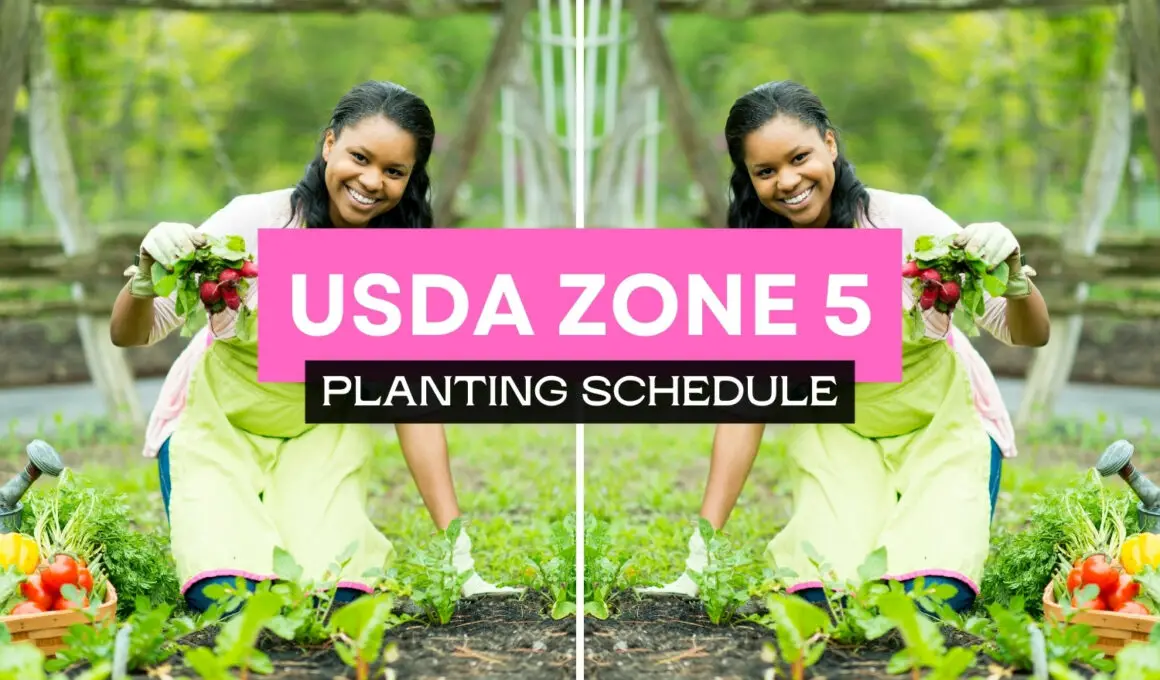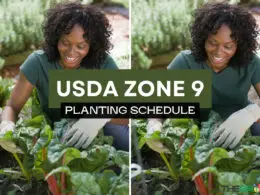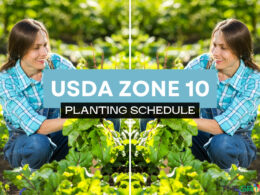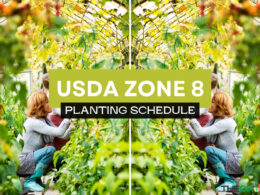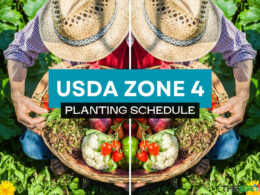In This Article Show
Welcome to the ultimate guide for Zone 5 gardeners, a comprehensive resource designed to help you navigate the unique gardening landscape of this temperate zone. With its blend of mild winters and warm summers, Zone 5 offers a generous growing season that, while longer than its northern neighbors, still presents the challenge of dealing with late spring frosts and the occasional early fall chill.
This guide is dedicated to helping you optimize your gardening efforts, from selecting the right plants that thrive in Zone 5’s specific conditions to extending your growing season and protecting your garden from unexpected temperature swings.
Whether you’re aiming to cultivate a lush vegetable garden, a vibrant floral oasis, or a harmonious blend of both, our month-by-month breakdown and targeted tips will guide you through each phase of the gardening year. Embrace the possibilities that Zone 5 gardening presents and prepare to elevate your gardening game to new heights. Let’s embark on this green journey together, exploring the best practices for a flourishing garden in Zone 5’s distinct climate.
Key Factors for Success in Zone 5
Gardening in Zone 5, with its relatively moderate climate, offers a diverse range of gardening opportunities. To capitalize on this and ensure a thriving garden, consider these essential factors:
Selection of Plant Varieties
- Climate Adaptation: Choose plants that are well-adapted to Zone 5’s climate. Look for varieties that can tolerate the occasional late spring frost and also withstand the summer heat.
- Frost Tolerance: Incorporate frost-tolerant vegetables like peas, spinach, and kale for early planting. For flowers, select hardy perennials and annuals that can bounce back from a chilly night.
- Heat Resistance: During the peak of summer, ensure your garden includes plants that can handle the heat without bolting or wilting. Certain varieties of tomatoes, peppers, and beans are bred for their ability to thrive in warmer temperatures.
Recommendations for Soil Preparation and Improvement
- Testing and Amending: Begin each season with a soil test to identify nutrient deficiencies and adjust pH levels. Amend the soil with organic matter, such as compost or well-rotted manure, to improve structure and fertility.
- Mulching: Apply a layer of mulch around your plants to retain moisture, suppress weeds, and regulate soil temperature. Organic mulches, like straw or bark, also enrich the soil as they decompose.
- Drainage and Aeration: Ensure that your garden beds have good drainage to prevent waterlogging, which can stress plants and lead to root rot. Aerating the soil can also promote root growth and improve water infiltration.
Strategies for Using Season Extenders
- Cold Frames: Utilize cold frames in early spring and late fall to protect seedlings and extend the growing season for cool-season crops. They can also be used to harden off indoor-started plants before transplanting.
- Greenhouses: A greenhouse can dramatically extend your growing season, allowing for the cultivation of plants that would typically struggle in Zone 5’s climate. Even a small, unheated greenhouse can provide valuable warmth and protection for seedlings and tender plants.
- Floating Row Covers: Lightweight and easy to use, floating row covers can protect plants from frost, wind, and pests. They’re ideal for extending the season for both spring and fall crops without the need for a structure.
Additional Tips for Gardening Success in Zone 5
- Water Wisely: Implement efficient watering practices, focusing on early morning irrigation to give plants time to dry before the cooler evening temperatures.
- Pest and Disease Management: Regular monitoring and early intervention can help keep your garden healthy. Use physical barriers, crop rotation, and organic pesticides as needed to manage pests and diseases.
- Planting Timing: Pay close attention to local frost dates and weather forecasts. Adjust your planting schedule as necessary to avoid late frosts in spring and to maximize your growing season into fall.
By focusing on these key factors, gardeners in Zone 5 can enjoy a productive and beautiful garden throughout the growing season. Adaptability, along with strategic planning and care, will ensure that your garden not only survives but thrives in this diverse climate.

Zone 5 Planting Schedule: Month-by-Month Guide
Early Spring (March – April)
Get Gardening For Beginners
Our new EBOOK shows newcomers and green thumbs alike a step by step guide to growing the garden of their dreams.
Suggestions for Starting Seeds Indoors and Appropriate Timing for Transplanting Outdoors
- Starting Seeds Indoors: Begin with crops that have a longer growing season, such as tomatoes, peppers, and eggplants, around 6-8 weeks before the last expected frost. Herbs and some flowers can also be started during this time.
- Timing for Transplanting Outdoors: Transplant seedlings outside after the last expected frost, typically in late May for Zone 5. Harden off plants by gradually exposing them to outdoor conditions over a week to reduce shock.
Soil Preparation Techniques to Ready the Garden for Planting
- Testing and Amending Soil: Early spring is the time to test your soil and amend it based on the results. Incorporate organic matter, like compost, to improve soil health and structure.
- Clearing and Tilling: Remove any leftover debris from last season and lightly till the soil to aerate it, being careful not to disturb the soil too much and harm its structure.
Late Spring (May – June)
Guidelines for Direct Sowing and Transplanting After the Last Expected Frost
- Direct Sowing: After the last frost, direct sow seeds for root vegetables like carrots and beets, leafy greens such as lettuce and spinach, and cool-season crops like peas.
- Transplanting: This is also the time to transplant seedlings started indoors for tomatoes, peppers, cucumbers, and other warm-season crops, ensuring they are hardened off properly.
Tips for Protecting Young Plants from Late Spring Frosts and Sudden Temperature Drops
- Frost Protection: Keep floating row covers or cold frames handy for unexpected late frosts. Covering your plants can provide a few degrees of temperature protection, crucial for tender seedlings.
- Mulching: Apply a layer of organic mulch around newly transplanted seedlings to help regulate soil temperature, retain moisture, and reduce weed competition.
This tailored planting schedule for Zone 5 takes into account the region’s climate nuances, from preparing the soil in early spring to protecting young plants from the last of the season’s frosts. Following these guidelines will help ensure a seamless transition through spring, setting the foundation for a fruitful and vibrant garden as the season progresses.
Summer (July – August)
- Succession Planting: Continue planting quick-growing crops like radishes, lettuce, and spinach every two weeks for a continuous supply. Consider planting a new round of beans in early July for a late summer harvest.
- Late Planting: Sow fall-harvest crops such as carrots, beets, and turnips in July to ensure a bountiful harvest before the first frost.
Managing Peak Growing Season Activities
- Watering: Implement deep, infrequent watering to encourage root growth. Early morning is the best time to water to reduce evaporation and the risk of disease.
- Pest Control and Disease Management: Regularly inspect your plants for signs of pests and diseases. Use organic methods whenever possible, such as introducing beneficial insects for pest control and removing infected leaves promptly to prevent the spread of disease.
Fall (September – October)
Recommendations for Planting Cool-Season Crops and Perennials
- Cool-Season Crops: Plant kale, Swiss chard, and other greens that can withstand light frosts for a fall harvest. Garlic planted in October will be ready for harvest the following summer.
- Perennials: Autumn is an ideal time to plant or divide perennials. Planting now allows them to establish roots before winter, leading to stronger growth in spring.
Instructions for Winterizing the Garden
- Mulching: Apply a thick layer of mulch around perennials and over garden beds to protect plants during the winter.
- Protective Coverings: Use burlap wraps around vulnerable shrubs and trees to shield them from winter winds and cold. Consider straw or leaf mulch coverings for garlic, strawberries, and other sensitive plants.
Winter (November – February)
Planning and Preparation for the Next Growing Season
- Ordering Seeds: Winter is the perfect time to order seeds. Take inventory of what you have and make a list of what you need.
- Garden Planning: Reflect on what worked and what didn’t in the past season. Plan your garden layout and crop rotation to avoid planting the same crops in the same spots, reducing disease and pest issues.
Suggestions for Winter Projects
- Garden Structures: Build or repair raised beds, trellises, and fences. These projects are easier to handle without the full garden in place.
- Tool Maintenance: Clean, sharpen, and oil your garden tools. Taking care of your tools in the winter ensures they are ready for spring.
Following this comprehensive guide through the seasons will help Zone 5 gardeners maximize their garden’s potential, ensuring a diverse and productive garden from spring through fall, and preparing effectively for the next growing season during the winter months.
Vegetable Planting Guide for Zone 5
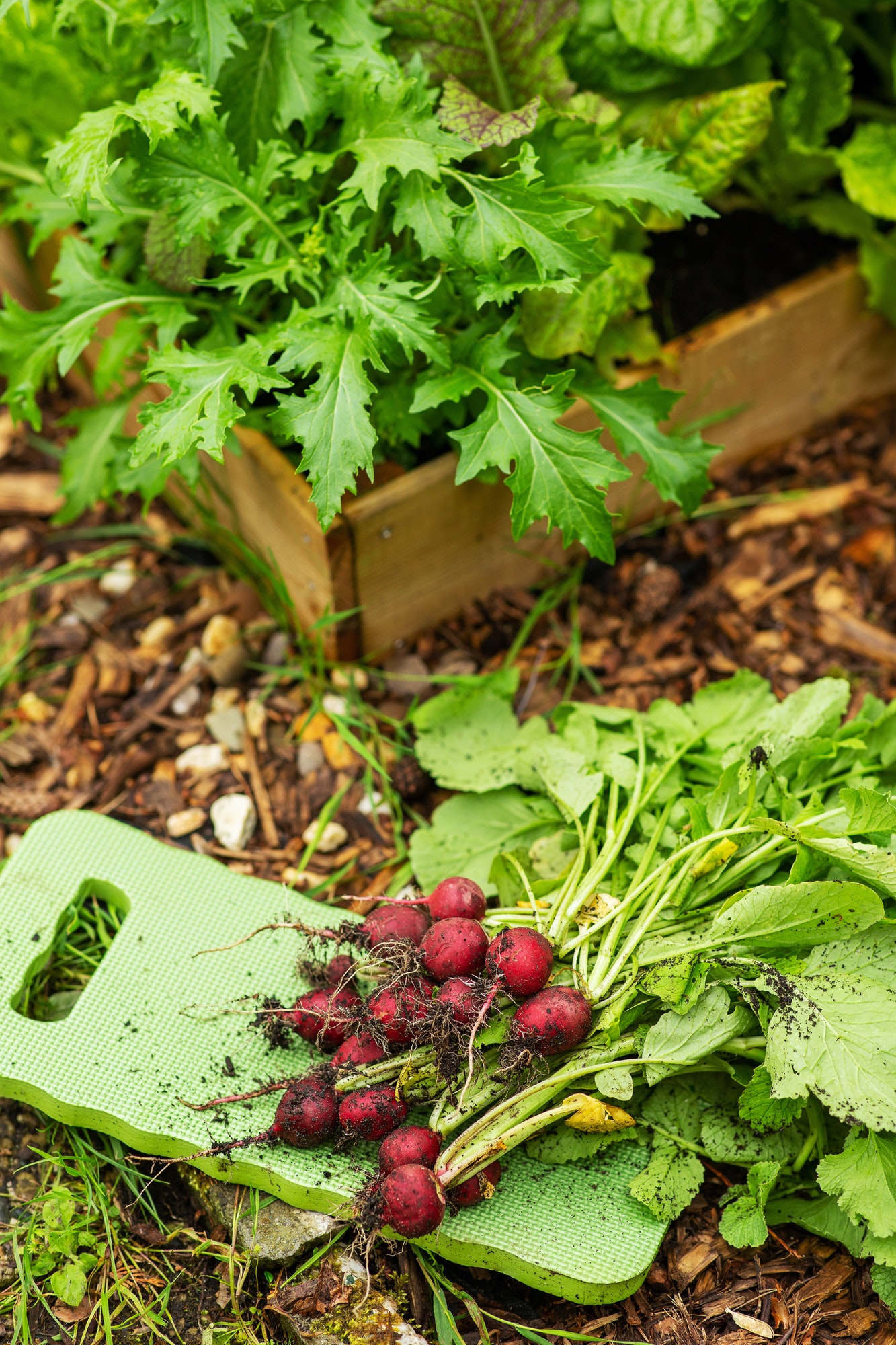
In Zone 5, gardeners can enjoy a wide variety of vegetables thanks to the region’s moderate climate. Below is a chart detailing optimal planting times for common vegetables in Zone 5, along with tips for ensuring a successful harvest.
Get Gardening For Beginners
Our new EBOOK shows newcomers and green thumbs alike a step by step guide to growing the garden of their dreams.
| Vegetable | Optimal Planting Times | Success Tips |
|---|---|---|
| Peas | Early April | Plant as soon as the soil can be worked for an early harvest. Provide support for climbing varieties. |
| Lettuce | Early April and again in August | Plant in partial shade if summer temperatures are high to prevent bolting. |
| Spinach | Early April and again in August | Choose bolt-resistant varieties for late spring and summer plantings. |
| Carrots | Mid-April to early July | Sow seeds directly in well-drained soil. Thin seedlings to prevent crowding. |
| Potatoes | Mid-April | Plant seed potatoes in well-drained soil with good sun exposure. Hill soil around plants as they grow. |
| Beets | Mid-April to late June | Sow seeds directly in the ground. Thin seedlings to ensure ample growth space. |
| Broccoli | Early April (transplants) | Start seeds indoors about 6 weeks before the last frost. Use row covers to protect from pests. |
| Tomatoes | After last frost (transplants) | Start seeds indoors 6-8 weeks before the last frost date. Choose varieties suited for your growing season length. |
| Peppers | After last frost (transplants) | Start seeds indoors 8-10 weeks before the last frost date. Use black plastic mulch to warm soil. |
| Cucumbers | After last frost | Plant in a sunny spot with well-drained soil. Use trellises for vining varieties to save space. |
| Squash | After last frost | Plant in an area with full sun. Provide ample space for sprawling vines. |
| Kale | Early April and again in July | Kale can tolerate cool temperatures. Use floating row covers to protect from pests. |
| Green Beans | After last frost | Direct sow in warm soil. Provide support for pole varieties. |
Tips for Ensuring Success
- Frost Protection: For early spring and late fall plantings, be prepared to protect sensitive seedlings from frost using row covers or cold frames.
- Soil Preparation: Enrich garden beds with compost or aged manure before planting to improve soil health and fertility.
- Watering: Provide consistent moisture, especially during dry periods. Mulching around plants can help retain soil moisture and reduce weed growth.
- Pest and Disease Management: Monitor plants regularly for signs of pests and diseases. Use organic controls whenever possible and practice crop rotation to prevent soil-borne diseases.
- Succession Planting: To extend the harvest season, plant quick-growing crops at intervals throughout the growing season.
By following this planting guide and incorporating these tips, Zone 5 gardeners can enjoy a bountiful and diverse vegetable garden from early spring through late fall.
Flower Planting Guide for Zone 5
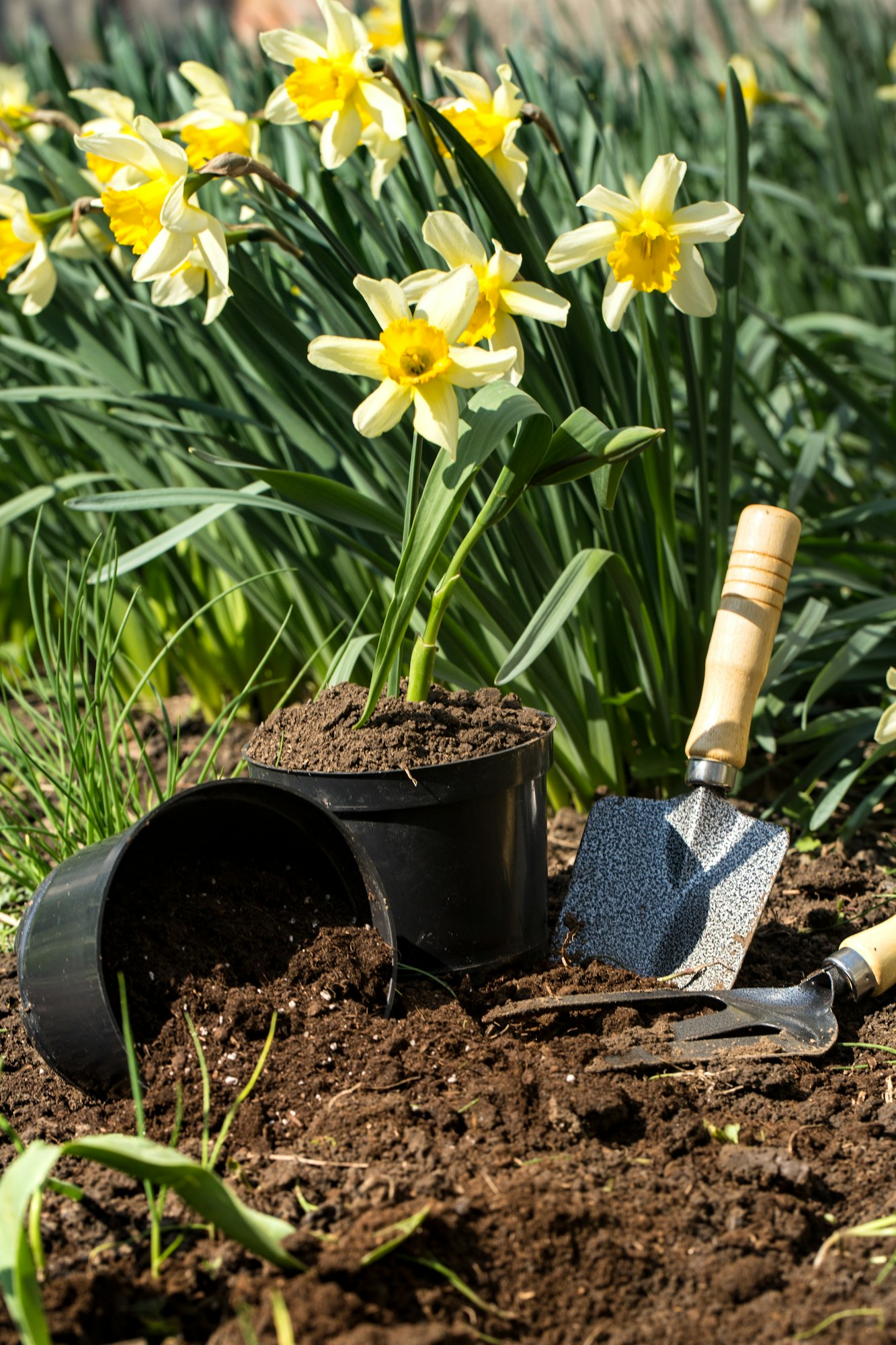
Zone 5’s climate offers a wide range of gardening possibilities, especially for flower enthusiasts. Below is a selection of annuals and perennials that thrive in Zone 5, complemented by planting and care tips to ensure your garden is a riot of color from spring to fall.
Annuals for Zone 5
- Petunias: Plant after the danger of frost has passed. These sun-loving flowers need well-drained soil and regular watering. Deadhead spent blooms to encourage more flowers.
- Marigolds: Direct sow or transplant after the last frost. Marigolds thrive in full sun and are relatively drought-tolerant. They also deter pests, making them great companions for vegetable gardens.
- Zinnias: Sow directly into the garden after the last frost. Zinnias loves the sun and well-drained soil. Keep the area around them free of weeds and deadhead regularly for continuous blooms.
- Impatiens: Ideal for shady areas, plant impatiens after the risk of frost is over. They prefer moist, well-drained soil and provide vibrant colors even in low-light conditions.
Perennials for Zone 5
- Hostas: Plant in spring or fall. These shade-loving perennials require well-drained soil and can be divided every few years to promote health and spread.
- Daylilies (Hemerocallis): Extremely hardy and adaptable, daylilies can be planted in spring or fall. They thrive in full sun to partial shade and offer a variety of colors and bloom times.
- Coneflowers (Echinacea): Plant in full sun in spring or early fall. Coneflowers are drought-tolerant once established and attract pollinators to the garden.
- Peonies: Plant bare-root peonies in the fall for blooms in late spring. They require well-drained soil and full sun to partial shade. Peonies are long-lived and can thrive in the same spot for decades.
Planting and Care Tips
- Soil Preparation: Before planting, enrich the soil with compost or a balanced fertilizer to give your flowers a healthy start.
- Watering: Establish a regular watering routine, especially during dry spells. Most flowers prefer moist, but not waterlogged, soil.
- Mulching: Apply a layer of organic mulch around your plants to help retain moisture, suppress weeds, and regulate soil temperature.
- Deadheading: For both annuals and perennials, remove spent flowers to encourage more blooms and extend the flowering period.
- Division and Pruning: Perennials like hostas and daylilies benefit from being divided every few years to maintain health and vigor. Prune perennials in late fall or early spring to remove dead or diseased growth and shape the plants.
By selecting the right flowers for Zone 5 and following these care tips, gardeners can enjoy a beautiful and vibrant garden that thrives throughout the growing season. Remember, the key to success lies in understanding the specific needs of each plant and providing the right conditions to encourage healthy growth and abundant blooms.
Season Extenders for Zone 5
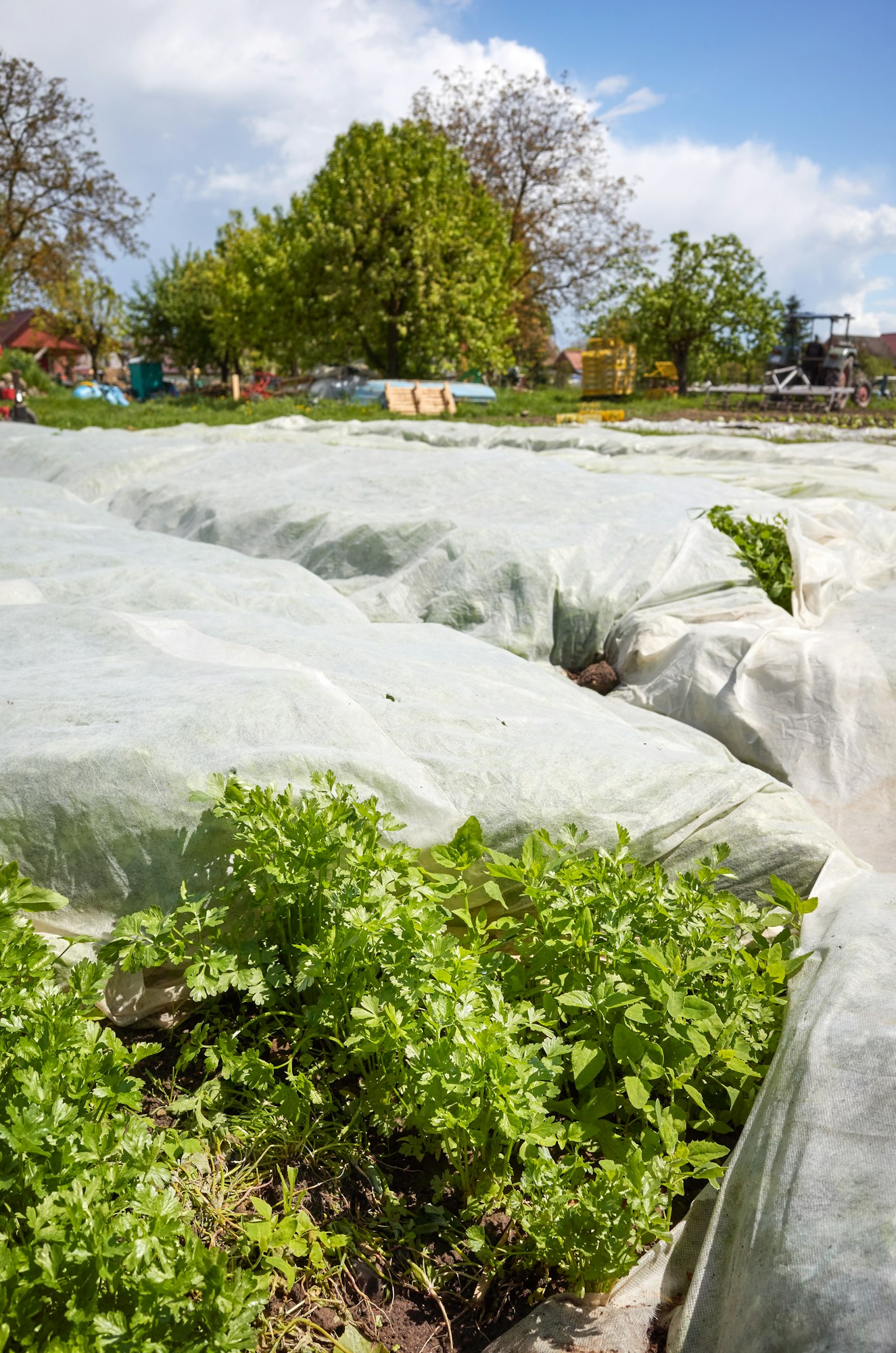
Gardeners in Zone 5 can significantly benefit from employing various season-extending techniques and structures. These methods can protect plants from early spring and late fall frosts, allowing for an extended growing season and a wider variety of plant choices. Here’s how to make the most of your Zone 5 garden with these season extenders:
Cold Frames
- Description: Cold frames are bottomless boxes with transparent lids that capture solar heat, protecting plants from cold weather. They are ideal for starting seedlings early in the spring and extending vegetable harvests into late fall.
- Implementation Tips: Place cold frames in a south-facing, sheltered spot to maximize sun exposure. Ventilate on warm days to prevent overheating. You can build your own from reclaimed materials like old windows or purchase ready-made options.
Floating Row Covers
- Description: Made from lightweight, spun-bonded fabric, floating row covers allow light, water, and air to reach the plants while providing frost protection. They come in various weights for different levels of temperature control.
- Implementation Tips: Use hoops or stakes to prevent the fabric from directly touching the plants, which could lead to damage. Secure the edges with rocks or soil to keep the covers in place. Row covers are particularly useful for protecting early spring and late fall plantings.
Greenhouses
- Description: Greenhouses provide a controlled environment for plants, offering protection from the cold and extending the growing season significantly. Options range from small, portable units to large, permanent structures.
- Implementation Tips: Consider starting with a mini greenhouse or a cold frame if space or budget is limited. For those with more room, a larger greenhouse can allow for year-round gardening. Ensure adequate ventilation to prevent overheating and humidity buildup.
Mulching
- Description: Applying a thick layer of organic mulch around plants can help insulate the soil, keeping it warmer in the fall and cooler in the summer, which extends the growing season.
- Implementation Tips: Use straw, leaves, or wood chips as mulch. Apply after the soil has warmed up in the spring and add more as needed throughout the growing season to maintain a consistent layer.
Hoop Houses and High Tunnels
- Description: Hoop houses and high tunnels are tunnel-shaped, framed structures covered in plastic. They offer a more affordable and flexible alternative to greenhouses, extending the growing season on both ends.
- Implementation Tips: Use PVC pipes or metal hoops to create the frame, and cover with clear plastic sheeting. These structures can be ventilated by rolling up the sides during the day and closing them at night to retain heat.
Practical Tips for Using Season Extenders in Zone 5
- Start Small: Experiment with one or two season extenders to understand their benefits and limitations before expanding.
- Monitor Conditions: Keep an eye on the temperature and humidity levels inside your extenders, adjusting ventilation as needed to avoid overheating or excessive moisture.
- Choose the Right Plants: Some plants benefit more from season extension than others. Focus on varieties that need a longer growing season or are particularly sensitive to frost.
- Be Prepared to Act: Always be ready to cover plants or uncover them based on sudden weather changes, especially during the transitional seasons of spring and fall.
By incorporating these season-extending techniques and structures into your Zone 5 garden, you can protect your plants from unpredictable weather, start your growing season earlier, and keep it going later into the fall. This not only increases your garden’s yield but also allows for a greater diversity of crops and a longer blooming period for flowers.
Monthly Maintenance Tips for Zone 5 Gardens
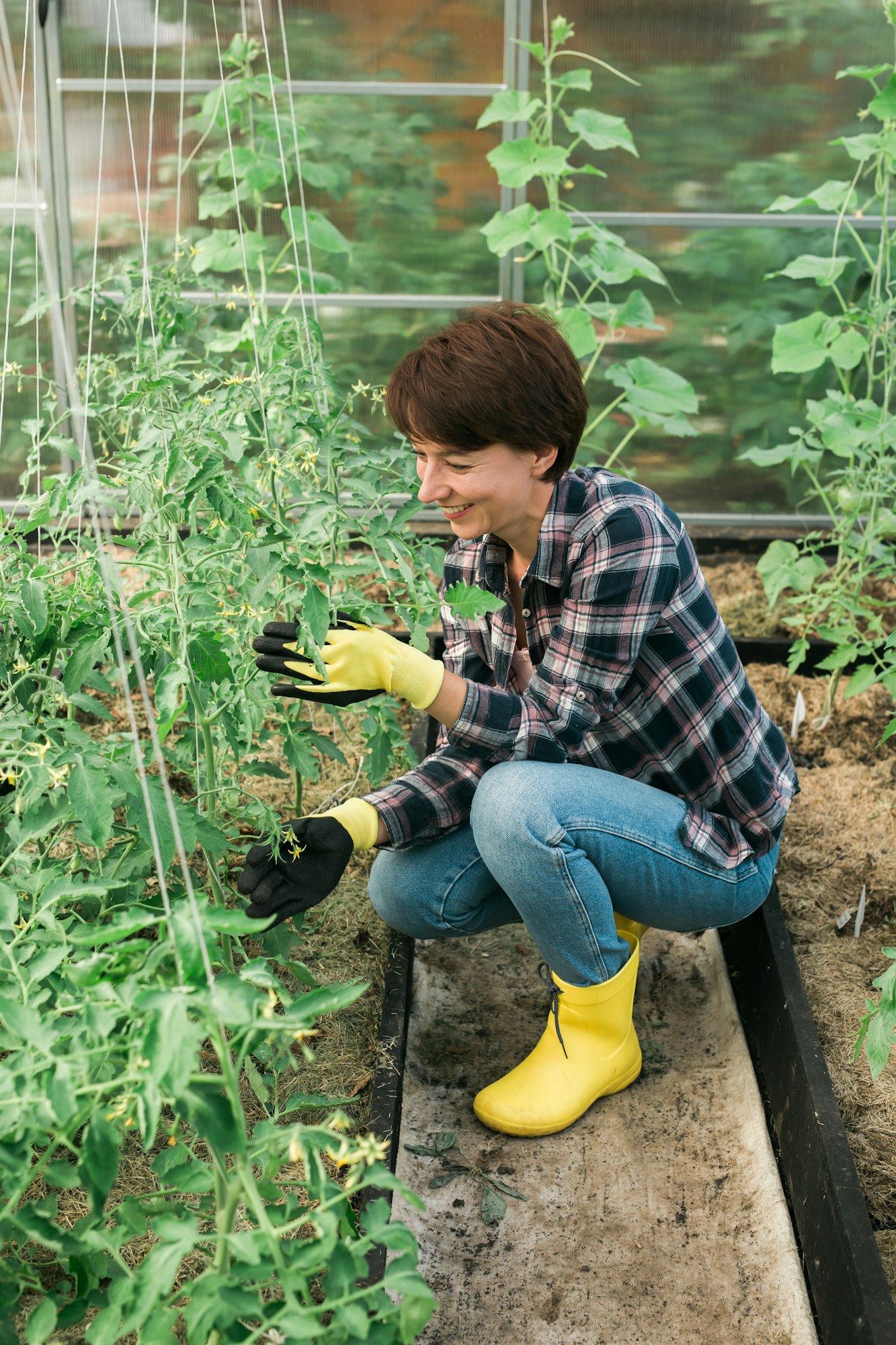
Zone 5 gardeners enjoy a relatively long growing season but must remain vigilant to maximize their garden’s potential. Here’s a month-by-month checklist focusing on maintenance, pest control, and disease management.
January
- Planning: Use the quiet of winter to plan your garden layout and decide which seeds to order. Consider crop rotation and companion planting in your plans.
- Tool Maintenance: Clean, sharpen, and organize garden tools and equipment.
February
- Seed Ordering: Finalize and place orders for seeds based on your garden plan. Look for disease-resistant varieties to help minimize future problems.
- Education: Attend gardening workshops or webinars to enhance your knowledge.
March
- Seed Starting Indoors: Start seeds indoors for cool-season crops like broccoli, lettuce, and kale, as well as for warm-season plants like tomatoes and peppers.
- Equipment Check: Ensure all garden machinery and irrigation systems are in working order.
April
- Soil Preparation: As the ground thaws, begin preparing your beds. Add compost or manure to enrich the soil.
- Early Planting: Direct sow cool-season vegetables as soon as the soil is workable. Consider using row covers for frost protection.
May
- Transplanting: After the last frost date, begin transplanting hardened-off seedlings outdoors.
- Direct Sowing: Plant seeds for warm-season crops directly into the garden.
June
- Watering: Establish a regular watering schedule, especially for new transplants. Consider early morning watering to reduce evaporation.
- Weeding and Mulching: Stay on top of the weeding and apply mulch to keep the soil moist and cool.
July
- Pest and Disease Monitoring: Inspect plants regularly for signs of pests and diseases. Use organic methods for control whenever possible.
- Succession Planting: Plant another round of fast-maturing crops for a continuous harvest.
August
- Harvesting: Regularly harvest vegetables and cut flowers to encourage further production.
- Deadheading: Remove spent blooms from flowers to promote new growth.
September
- Fall Planting: Plant cool-season crops for a fall harvest. Begin planting spring-blooming bulbs.
- Garden Cleanup: Start cleaning up spent plants and debris to reduce overwintering pests and diseases.
October
- Mulching: Apply a protective layer of mulch to perennial beds after the first frost to insulate over winter.
- Winter Preparations: Bring in any tender perennials and prepare sensitive plants for the coming cold.
November
- Tool Storage: Clean and store garden tools. Drain and store hoses and irrigation systems.
- Garden Beds: Add a layer of compost to garden beds to decompose over winter.
December
- Planning for Next Year: Review notes from the past season to plan for improvements next year.
- Rest and Research: Take time to rest, but also use the opportunity to research new gardening techniques and plants.
Emphasis on Pest Control and Disease Management
- Regular Inspections: Early detection is crucial. Regularly check your plants for signs of pests and diseases.
- Integrated Pest Management (IPM): Employ IPM strategies that focus on prevention, using cultural, biological, and chemical controls only as needed.
- Cleanliness: Keep the garden free of debris and diseased plant material to minimize hiding places for pests and sources of infection.
- Diverse Planting: Encourage a healthy ecosystem by planting a variety of species, which can help reduce pest outbreaks and the spread of diseases.
Following this monthly guide will help you keep your Zone 5 garden healthy and productive throughout the year, ensuring that you enjoy the fruits of your labor from early spring until late fall.





